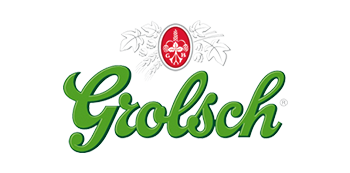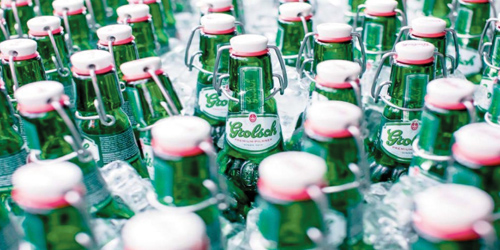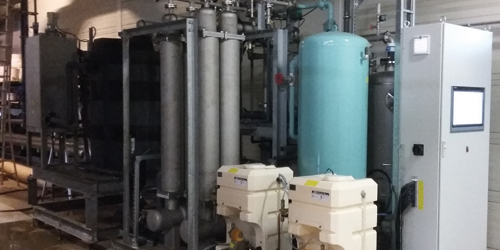Increased production with lower water consumption

About Grolsch
Grolsch has a history dating back to 1615, making it one of the oldest companies in the Netherlands. Grolsch only brews beer and has grown over the years to become one of the strongest A-brands in the Netherlands. Since 1995 Grolsch has been entitled to call itself ‘Royal’.
The Enschede brewery is one of the most environmentally friendly breweries in the world and one of the top water savers within the industry.
Grolsch’s ambition is to produce more beer with even less water. Grolsch wants to continuously improve and aims to further reduce the water consumption per hectoliter of beer.
In concrete terms, Grolsch consumed 4.6 hectoliters of water per hectoliter of beer in 2008 and 3.56 hectoliters per hectoliter in 2016. This has resulted in a water reduction of 23%.
Our project
AndreiHaret, General Manager of Royal Grolsch: “Sustainability remains our challenge. We attach great importance to sustainable and responsible cooperation throughout the chain.
- By 2020, CO2 emissions will be reduced by 33% compared to 2008 levels.
- To achieve a water saving of 36% in 2020 compared to the water consumption in 2005.
- In 2018, increase the company’s own biogas production by 2% compared to 2017 in order to be 20% self-sufficient in energy.
Increasing pressure on available water resources
Water: mankind, agriculture and industry cannot do without it. Increasing urbanization and prosperity have increased the pressure on access to clean water. Deficits in the coming decades are mainly due to rising demand from industry (including the food and beverage industry). Grolsch is trying to contribute to tackling this global problem of water scarcity.
Grolsch wants to continuously improve and aims to further reduce the water consumption per hectoliter of beer.
Producing more beer with even less water
Since the construction of a new plant in 2004, RWB has been working with Grolsch to operate, maintain and optimize the general water treatment plant on the site. To achieve the water-saving objectives, the possibility of reusing the backwash water from the sand filters and the water softening installations was examined in 2017.
Backwash water reuse plant
Grolsch collects approx. 20.000 m3 of backwash water a year from the de-ironing, softening and demisting filters in the sewerage system. In order to reuse this backwash water and convert it into process water, RWB has designed a ceramic membrane filtration installation.
The entire unit, with the exception of the rinse water buffer and the abstraction pump, is compactly assembled on a frame (550 x 220 x 300 cm). The installation supplies water that is free of particles (>100 nanometers) and has a recovery rate of more than 95%.
What is realized?
Our customer speaks
“One of the most important water-saving projects in 2017 is the recovery of backwash water from the existing water treatment plant. Previously, this backwash water (from the sand filters for the removal of iron and manganese) went directly to the biological wastewater treatment plant as cold water.
This year we have decoupled the process. The backwash water is now treated by means membranes and then reused. This does not only result in a water saving of at least 0.1 hectoliters (3%) per filled hectoliter of packaged beer, but the waste water is also stabilized in temperature. This will allow the existing anaerobic reactor to function better. This results in a larger part of organic load. In other words, an increased biogas production of 2%.”
Utility Manager Martin Bosscher │ Royal Grolsch Brewery


“A rinse water recycling installation with a recovery of 95%.”
Constantly looking for ways to reduce water consumption.
Grolsch discharges approximately 20.000 m3 a year into the sewerage system. In order to reuse this waste water and use it as process water, RWB has designed a ceramic membrane installation with a recovery rate of more than 95%.
Curious about the possibilities for reuse?
More information about our activities in the reuse and raw materials sector? Feel free to contact us via the number below or use the contact form.






